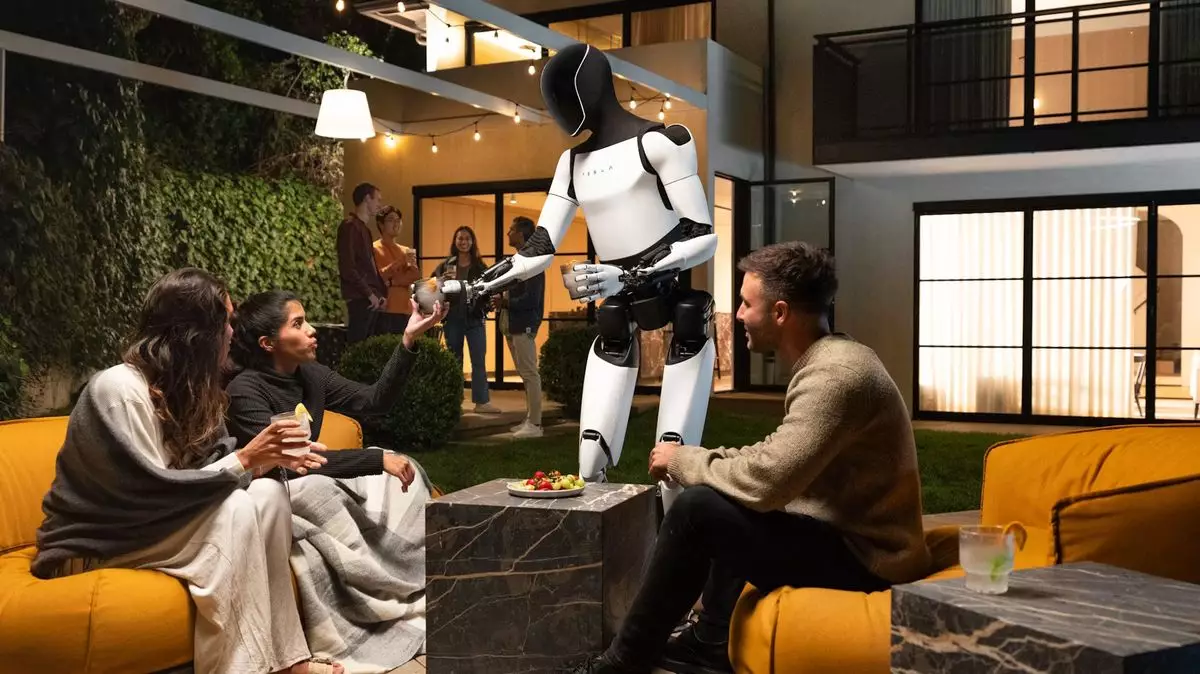In recent years, the automotive and tech industry has witnessed a remarkable push towards automation, spearheaded by figures like Elon Musk. During a Tesla event dubbed “We, Robot,” Musk unveiled a prototype humanoid robot named Optimus. This presentation marked a pivotal moment as it showcased not just a concept, but a glimpse into the potential capabilities of robotics in our everyday lives. The expectations set forth were monumental, with Musk claiming that this robot could perform a multitude of tasks from babysitting to bar-tending. However, amidst the glitz and glamour of the presentation lurked a critical question: how capable is this robot, really?
Musk’s enthusiasm for the Optimus robot was palpable, as he proclaimed that this innovative machine could become an essential part of daily life for nearly every person on the planet. With promises of being a versatile helper—handling everything from walking dogs to serving drinks—this robot struck viewers as both exciting and implausible. It’s not uncommon for tech moguls to embellish claims, and Musk has a history fraught with bold statements that often raise eyebrows. While the vision of an autonomous robot assisting with household chores is tempting, the line between reality and exaggeration can often blur in tech demonstrations.
Despite the sleek appearance and robotic movements of the Optimus prototype, a nagging sense of skepticism emerged from observers. Critiques suggested that the robot may not be the independent marvel Musk described. Reports indicated that the robots showcased during the event were being operated remotely by Tesla employees, a detail that raises concerns regarding their true autonomy. Without acknowledging that these robots were not functioning independently, Musk’s claims could lead to misconceptions about their capabilities and potential.
When evaluating the practicality of such a sophisticated machine, it’s important to consider the current state of robotics and artificial intelligence. While progress has been made in various fields, developing a fully autonomous bipedal robot that can navigate human environments and interact meaningfully remains a significant technical challenge. The question of whether we can expect robots to become fixtures of our homes in the near future invites a dose of realism. There is an evident gulf between ambitious aspirations and the kind of technology that is reliably deliverable.
Musk’s decision to not explicitly state whether the robots were powered by advanced AI or were simply being controlled raises eyebrows. Aessuring full autonomy with no substantial evidence can potentially mislead the public, especially in a field rife with hype. Without clear definitions of what constraints currently shape Optimus’s functionality, skepticism regarding its true capabilities is justified. Critical scrutiny is necessary to balance enthusiasm for new innovations with an understanding of their limitations.
The public’s reception of this presentation inevitably reflects broader societal attitudes towards robotics, AI, and their implications. As excitement builds about the potential for automatons that could improve or transform aspects of daily life, it’s important for companies like Tesla to communicate transparently about the operational capabilities of their inventions. Misrepresentation, whether intentional or not, can foster disillusionment and skepticism, resulting in a backlash against future innovations.
Consumer trust is paramount, and a misleading impression could hinder tech advancements. Transparency in robotics not only builds confidence among consumers but also encourages informed discussions about the ethical implications and potential consequences of implementing such technologies within society.
Although the Optimus robot is a representation of promising technology, caution should prevail in setting expectations. Real advancements in robotics may one day welcome such devices into our homes and everyday lives, but current realities suggest that we may still be years away from this vision being fully realized. As enthusiasts and skeptics alike continue to engage in dialogue surrounding the potential of robotics, clear communication from developers, leadership, and tech influencers remains essential.
A delicate balance must be struck; while we should celebrate innovations, we must also approach them critically. Tesla’s Optimus, for now, is a fascinating glimpse into a future of possibilities that requires responsible navigation. Understanding the real boundaries of what is achievable today ensures that both public excitement and critical engagement can coexist, driving forward the development of technology for the betterment of society.

